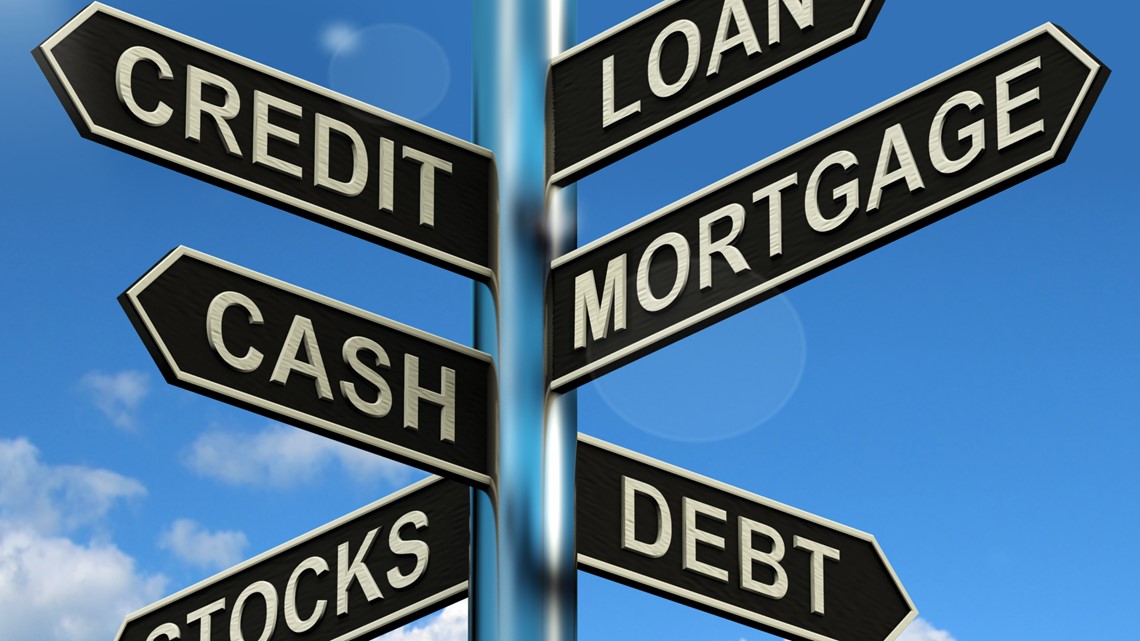Biggest pitfalls, mistakes and how to dig out
According to the New York Federal Reserve, consumer debt reached $14.56 trillion after the fourth quarter of 2020.
TEMPLE, Texas — Debt remains a major problem in America, according to the New York Federal Reserve and Debt.org, which showed Consumer debt in 2020 was almost 14.5 percent.
Lourdes Zuniga, the Executive Director of Pathways to Financial Health from Austin, said the biggest mistake people make is overspending and urges people to know what you have and spend less, even if it makes life a little uncomfortable for a while .
“I think people think I have a credit card and that’s why I’m going to use it and that’s why they operate it,” she said. “Try not to do that. The biggest mistake people make is overspending and living beyond their means.”
Bill Fay, who writes for Debt.org, wrote in one updated piece 2021 for the page about debt in four main areas:
- home – Total mortgage debt rose to $10.4 trillion, up $1 trillion from the same point in 2017. Fay called the increase in this type of debt an overall good thing.
- Automatic — Total auto debt for the fourth quarter of 2020 is $1.37 trillion, a $100 billion jump from the same point in 2018.
- student loans – They continue to escalate, growing to a record $1.56 trillion in the fourth quarter of 2020, up $100 billion from the same point in 2018. The average student debt in 2020 was $38,792.
- credit cards – Credit card debt was $820 billion in the fourth quarter of 2020, reflecting a slowdown in consumer spending during the pandemic after this debt category peaked at $930 billion a year earlier. The good news is that credit card debt actually declined in 2020, the first decline in a major consumer debt category in seven years.
Zuniga, who has helped many low-income families find financial freedom, said her biggest piece of advice for anyone struggling: Avoid predatory lenders at all costs, even if it means strapping in for a rougher route.
“Avoid going to payday loans, avoid going to robbery loans, and avoid going to some auto loans because these products are designed to never have an end date,” she said. “Read the fine print and all they do is you will stay in this cycle forever.”
The Pew Charitable Trusts, a organization for information the public by providing useful data that sheds light on the issues and trends shaping our world, said most payday loans are prohibitively expensive for most borrowers and tied to their payment cycle.
“The average payday loan requires a one-time repayment of $430 on the next payday, which consumes 36 percent of the average borrower’s gross paycheck,” the organization explained on its website. “However, research shows that most borrowers cannot afford more than 5 percent while covering the basic costs at the same time.”
According to PEW, the average payday borrower is in debt five months out of the year and spending on average $520 in fees to borrow $375 repeatedly. The average fee for an in-store loan deal is $55 per two weeks.
Texas has none specified maximum loan amount borrowers can take. There is also no fixed maximum funding fee with an APR that can be in excess of 400%.
While Zuniga has previously urged many to stop taking out payday loans, she also said people need to stop running away from their financial problems, demands a free credit report every year and make a plan with those you owe money to.
“People are very forgiving and I don’t think we see that with collectors, but if you contact them and show good faith often, they are willing to negotiate with you as long as you are willing to make that commitment to them and to me.” I’ll pay you,” she said.


Comments are closed.